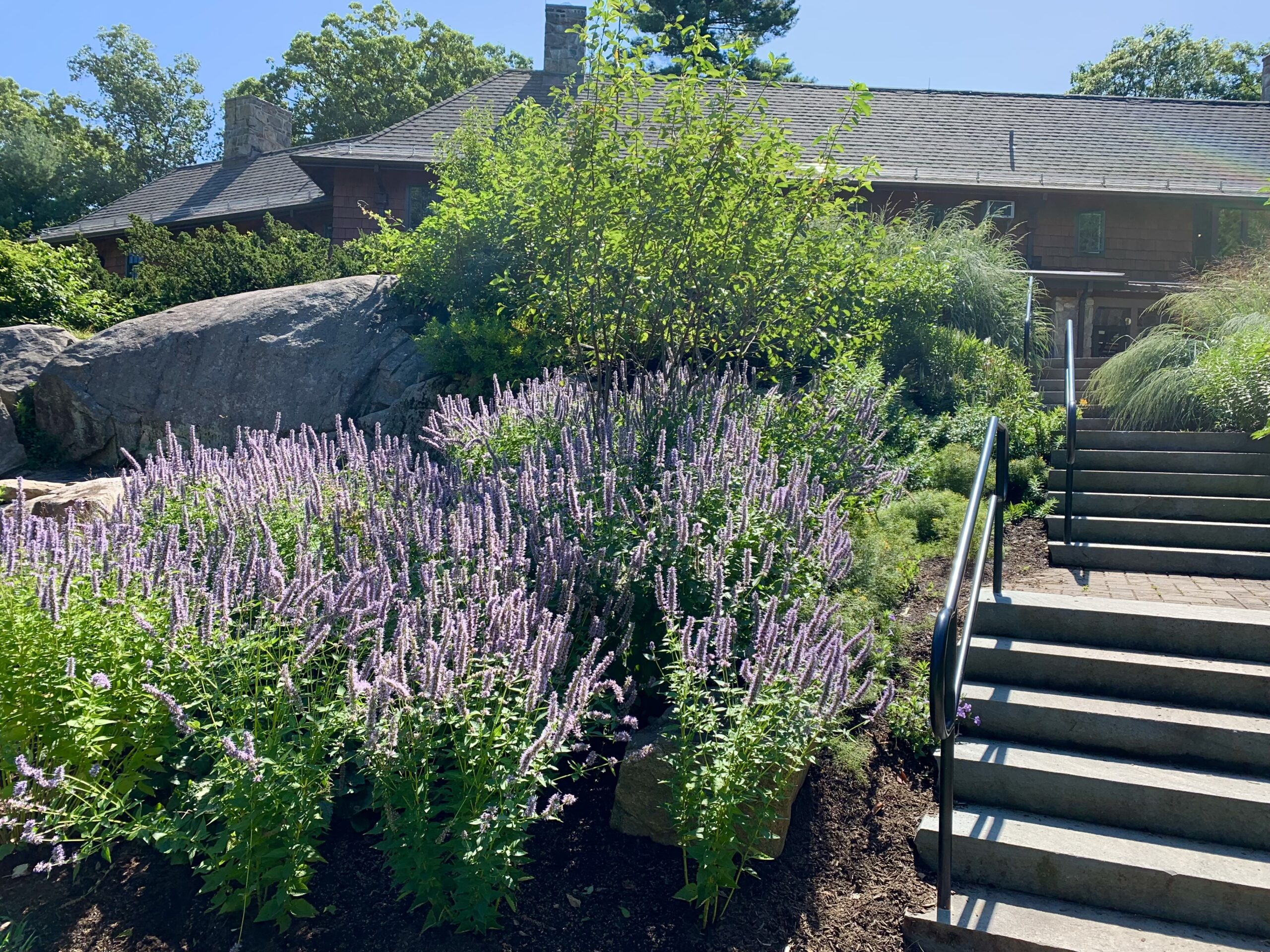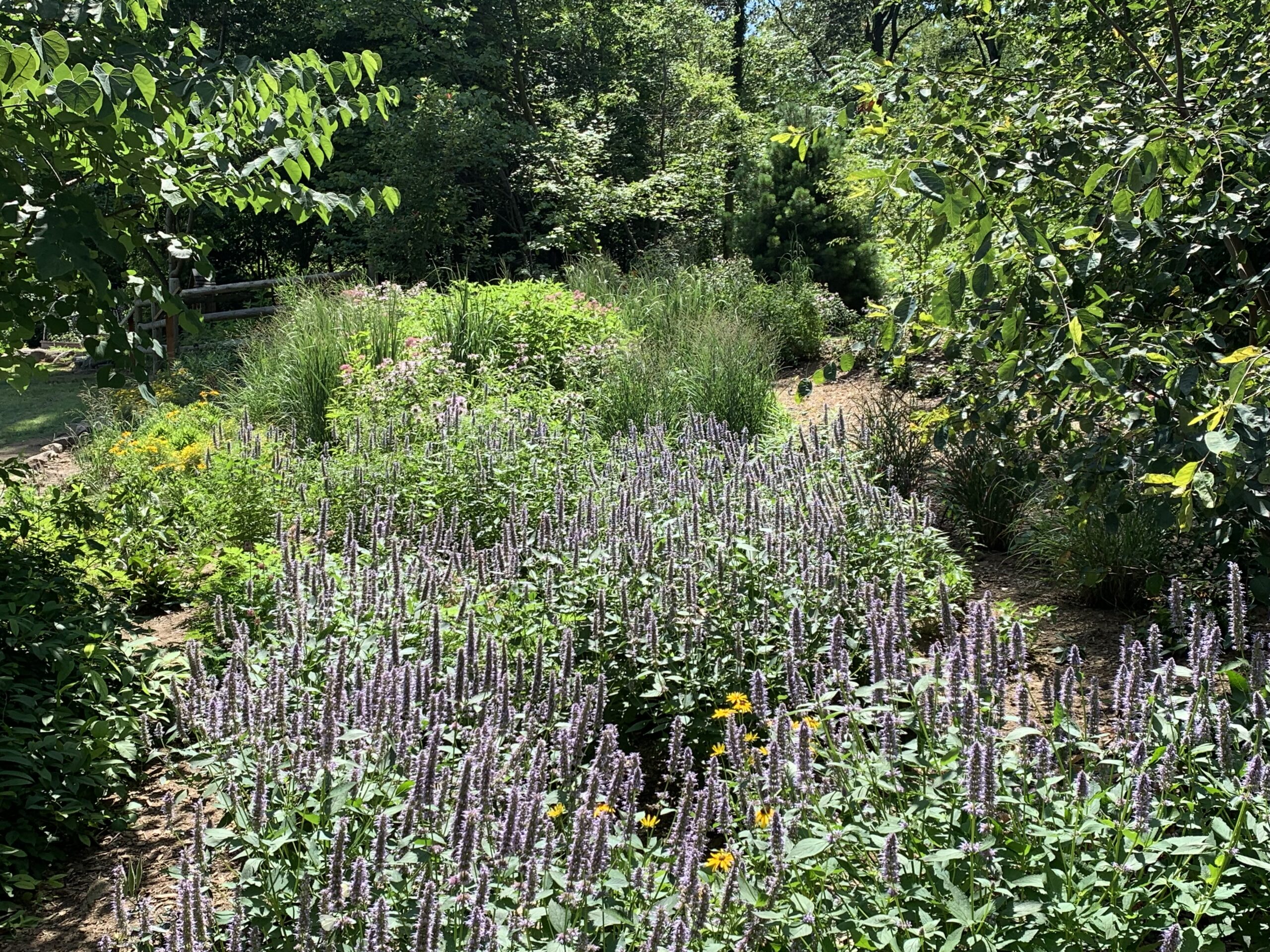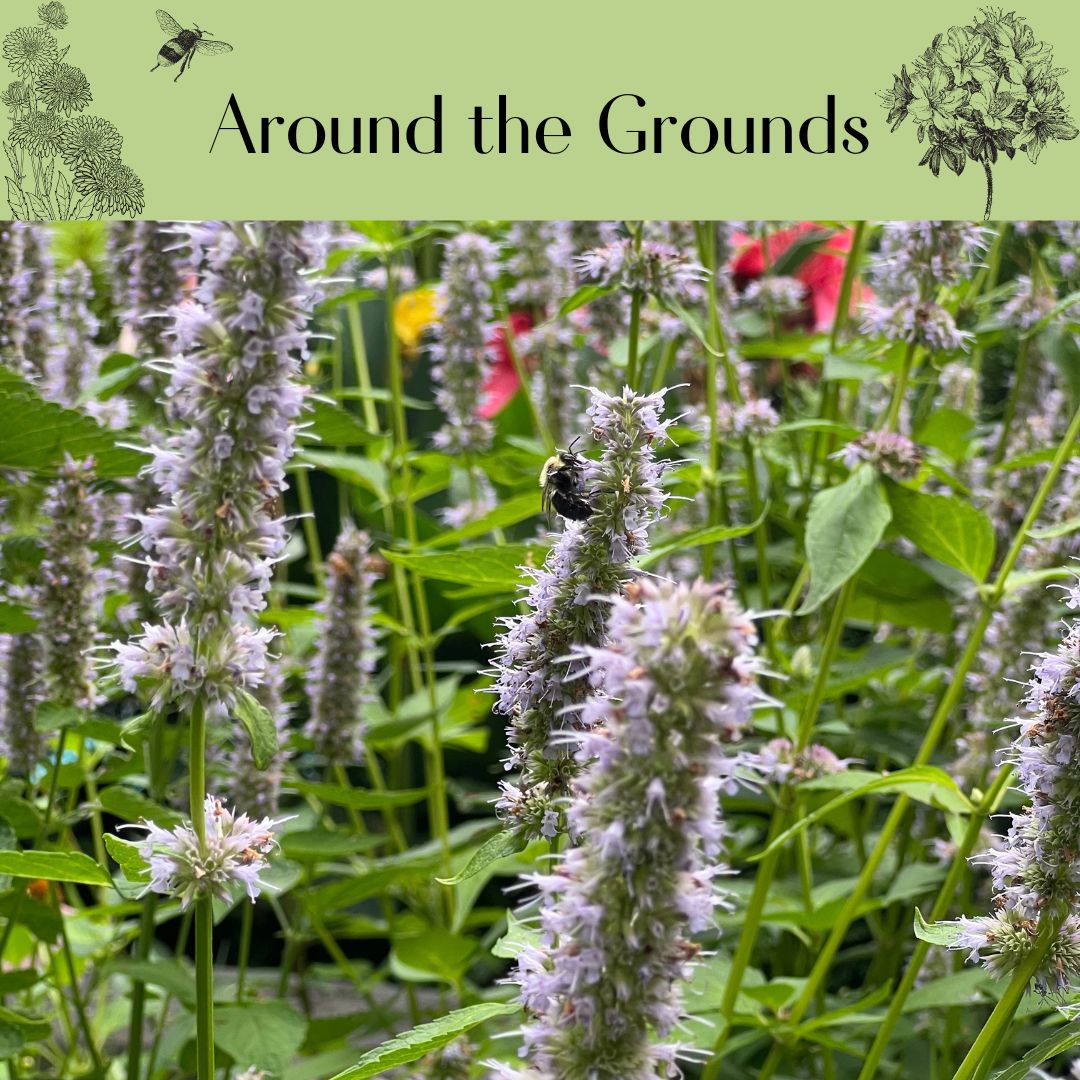We plant Anise Hyssop (Agastache foeniculum) every chance we get. Any sunny, dry place is perfect.
We planted it in the entry garden at the Greenburgh Nature Center.

We planted it in the Pollinator Garden.

We planted it in the Meadow.
We bring it into our butterfly exhibit in containers as a nectar supply.
Whenever we are asked for advice on planting community pollinator gardens, we recommend Anise Hyssop.
Photo: August Brosnahan
And we always recommend Anise Hyssop for drought-tolerant residential gardens.
We just can’t get enough of this excellent plant! Here are the reasons why:
- It is gorgeous!
- It blooms from July through September
- Butterflies and bees love it
- It is extremely drought-tolerant and does well in poor soil
- Deer, rabbits, and woodchucks avoid it
- It is sturdy, upright, and mixes well with other plants
- It is host to several species of moths and butterflies
- The leaves are aromatic, edible, and can be used to make herbal tea
Each flower stem of Agastache holds dozens of tiny lavender flowers loaded with nectar. Even when the flowers finally fade, the stalks are attractive and bring around the very last of summer’s bees and butterflies.
Anise Hyssop is native to the Great Plains and dry prairies of the American Midwest. Hardy to Zone 4, the only thing it really can’t take is wet soil. It prefers full sun, but can tolerate some shade as long as the soil is very well drained. Plants can disappear over the winter if the ground stays wet for long periods. We replace any that don’t make it with gallon-sized container plants in the spring and they very quickly catch up to the survivors.
Agastache foeniculum grows 3 to 4 feet tall, forms clumps, and doesn’t seem to expand by rhizomes, but it will seed itself around to make new plants in good conditions. There are several cultivars of hybridized plants now widely available in the market. ‘Blue Fortune’ and ‘Black Adder’ both result from a cross between Agastache foeniculum and Agastache rugosa, an Asian plant. Though we prefer the straight species, the hybrids certainly attract bees and butterflies, and have proven themselves durable, at least in Zones 5-7. The hybrids are sterile and will not seed themselves in the garden.
We do have one problem with this plant: deciding how to pronounce the scientific name! Horticulture expert, Bill Cullina, says “ag-OST-ach-ee,” sounding rather like a sneeze. On-line sources, with audio, give the “American” pronunciation as “aga-STASH.” Looking a bit further, however, we find general agreement that the word “Agastache” comes from the Greek words “agan” meaning much or many, and “stachys” meaning ear of grain. Though that description for Agastache foeniculum is a bit puzzling since the flower doesn’t really look like grain to us, the Greek origin of the word does suggest that the appropriate pronunciation is “aga-STACK-ee,” so we go with that. As for “foeniculum,” we pronounce it “fen-ICK-you-lum,” a word that either comes from the Latin “foenum” for hay, or the related Italian word “finocchio” for fennel. The leaves smell much more like fennel than hay!
Unfortunately, the common name, “Anise Hyssop,” doesn’t clear things up. “Anise” makes sense if you smell or taste the leaves, but “Hyssop” is a completely unrelated plant family. In any case, if you’re asking for this wonderful plant, saying either “aga-STACK-ee” or “Anise Hyssop” will work.
So, is this too much of a good thing?
We don’t think so!

